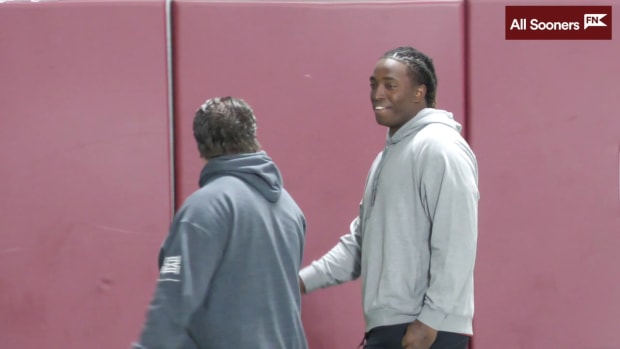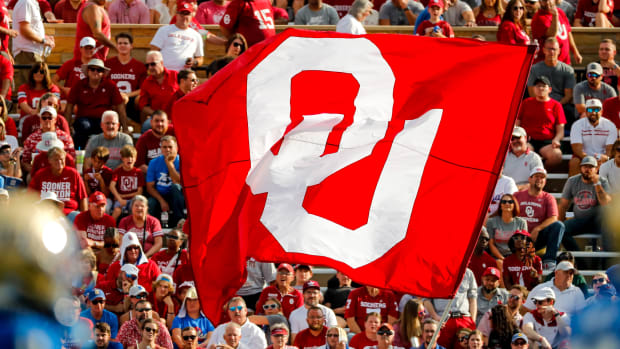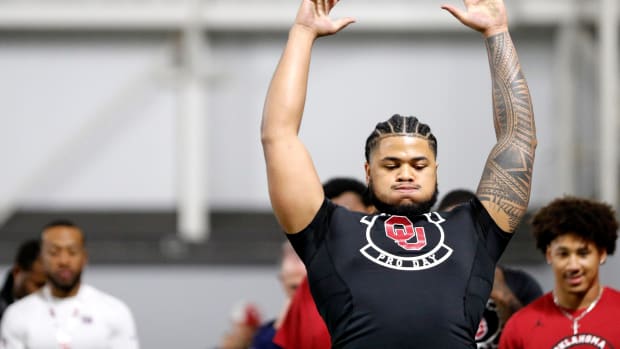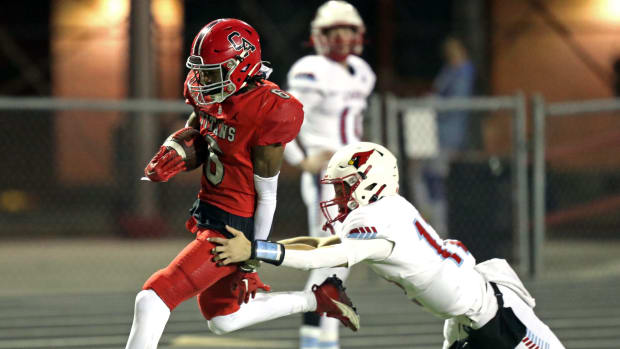Grant of Rights? TV Contracts? Scholarship Limits? Big Ten Answered None of These
The Big Ten Conference’s decision Tuesday to close up shop for 2020 is the first official domino to fall in the demise of college football this year.
The Pac-12 joined the Big Ten about an hour later in cancelling its fall sports.
But those announcements raise more questions than they answer.
A pending decisions (and hopefully announcement) from the Big 12 could be coming down the pike later Tuesday as league presidents and athletic directors are reportedly meeting at 5 p.m. CT. That could provide clarity. But it might not, not as long as the SEC and ACC seem intent on playing.
Give the Big Ten credit. It was the first Power 5 league to do away with non-conference games, and now it’s the first Power 5 league to cancel the season. The B1G can never be accused of waiting for the political winds to blow.
“We know how significant the student-athlete experience can be in shaping the future of the talented young women and men who compete in the Big Ten Conference,” said Big Ten commissioner Kevin Warren in a league statement. “Although that knowledge made this a painstaking decision, it did not make it difficult. While I know our decision today will be disappointing in many ways for our thousands of student-athletes and their families, I am heartened and inspired by their resilience, their insightful and discerning thoughts, and their participation through our conversations to this point. Everyone associated with the Big Ten Conference and its member institutions is committed to getting everyone back to competition as soon as it is safe to do so.”
The fall sports impacted are men’s and women’s cross country, field hockey, football, men’s and women’s soccer, and women’s volleyball.
The Big Ten says it will “continue to evaluate a number of options regarding these sports, including the possibility of competition in the spring,” and says “decisions regarding winter and spring sports will also continue to be evaluated.”
But the league’s formal announcement leaves a lot of other significant questions unanswered.
For instance, if the Big Ten actually cares about the health and well being of its student-athletes, is it really going to force them to play two full (or mostly full) seasons in one calendar year?
And what of schools who want to try to play games outside of the Big Ten’s purview?
Nebraska coach Scott Frost said Monday his school would continue to consider “other options” toward playing a college football season in 2020.
That sounds like a hollow threat — as if the Cornhuskers could go off and join the Big 12 or some other hastily arranged amalgam of Power 5 teams and play 10 or 12 games, right?
But is it hollow?
Television contracts in the Big Ten (and other leagues) have a Grant of Rights clause that prevents schools, under severe financial penalty, from running off with another league, that’s true. But consider the bigger picture:
Is such a contract, based on a conference's inventory of playing and televising college football games, legally binding if no games are played or televised? Could the Big Ten really take Nebraska's new TV money if the league is in virtual shutdown? Or, is there language written in the contracts that account for a pandemic or other such unforeseen crises?
And could Nebraska (or Michigan, or Ohio State, or Iowa, or whoever) go ahead and step away from its Big Ten affiliations for a year — perhaps even on a straight independent party ticket — and put together some kind of arrangement that does pays the Big Ten its standard grant-of-rights penalty but also pays the participating schools and/or football programs beyond the language of those existing contracts?
Lawyers would have a field day.
And consider, too, that maybe Nebraska (or whoever) wants to satisfy its loyal fan base with a home football schedule. Gate receipts from a reduced-capacity stadium wouldn’t make anyone rich, but they would help mitigate the financial shortfall.
Also — and this is how the coaches are looking at it — maybe teams don’t want to fall behind their competition in recruiting.
For Ohio State, Michigan, Penn State and a few others, that competition is Alabama, LSU, Auburn, Clemson, Florida State, Oklahoma and Texas — all of whom may actually play this fall.
Losing chunks of an entire recruiting class could do long-term damage to a powerhouse program’s profile in the eyes of recruits. And your answer is that you might play a shortened season in the spring? Might? Given the uncertainty and lack of knowledge about Coronavirus, spring football is no less sketchy at this point than fall football.
Speaking of coaches, there's the little matter of the transfer portal. Elite players like Purdue running back Rondale Moore, Minnesota wide receiver Rashod Bateman and Penn State linebacker Micah Parsons have already opted out of college football for the NFL. With no season in 2020, what might others like Ohio State quarterback Justin Fields do? Or what about former Sooner running back Trey Sermon? Could he return to Norman for his senior year? The list could go on and on.
And then consider that 2020 is supposed to be the end of the road for Big Ten seniors. Not only the NFL Draft — which might or might not be rescheduled to accommodate prospects who didn't opt out — but also the outgoing seniors who aren’t building their futures toward pro football.
Some will graduate next May, but some already have and might have jobs or internships or postgraduate opportunities lined up in the spring. Their whole college careers, academically, athletically, socially and otherwise, have been aimed at the spring of 2021 so that they may move on from a football life.
Now they’re being told that their final season has been put on hold for five or six months and they should come back and do it again next spring?
And finally, what about future rosters? College football teams — especially the power brokers — are constructed around a tight schedule of players coming in and players going out. It’s like a train station, and if a train shows up early, or if a train leaves late, the whole thing can become a tangled mess.
There are now endless streams of mid-term enrollees, high schoolers (and their families) who are angling their prep careers such that they can get to college a semester early.
There are junior college transfers who have spent two years polishing their transcript to get enrolled in spring of 2021.
Sure, the Big Ten (or whoever) could petition the NCAA for and issue blanket waivers of the existing scholarship restrictions, but what effect might that have when (not if) some coaches start getting creative with any potential loopholes?
None of these questions have ever been answered before — because they’ve never been asked. There’s been no need.
But the Big Ten’s announcement Tuesday only heightened the need for answers — to these questions and much more.
To get the latest OU posts as they happen, join the SI Sooners Community by clicking “Follow” at the top right corner of the page (mobile users can click the notifications bell icon), and follow SI Sooners on Twitter @All_Sooners.





